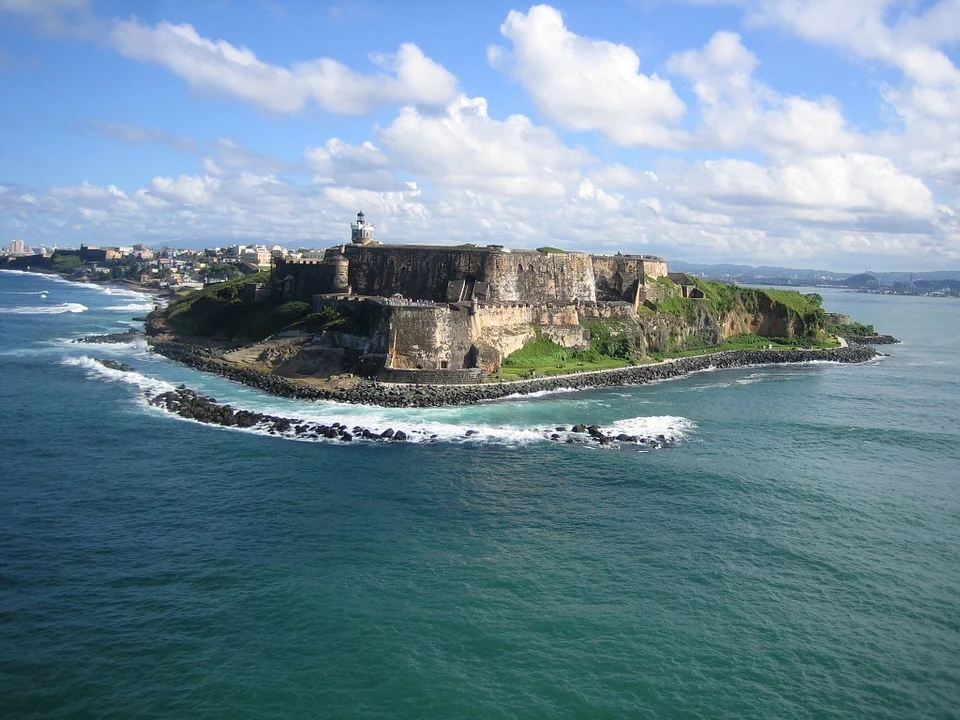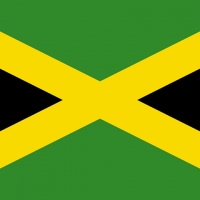In light of the annual Shark Week presentations that air on the Discovery Channel, you might wonder about Puerto Rico.
Does this featured location have sharks, and how dangerous are they to humans?
Contents
- So… Are There Sharks in Puerto Rico?
- 10 Shark Species in Puerto Rico
- Is it Safe to Swim in Puerto Rico?
- Interesting Shark Facts in Puerto Rico
- Sharks in Freshwater Vs. Saltwater
- Warning and Safety Tips for Swimming in Shark-infested Waters
- Priority Safety Tips for Swimmers and Surfers
- Summary
- Sources
- Traveling to Puerto Rico?
- Puerto Rico Safety Overview
- Frequently Asked Questions
So… Are There Sharks in Puerto Rico?
The Puerto Rico Island sits between the Atlantic Ocean and the Caribbean Sea, where you can guess sharks do exist.
Turns out, about 40 species reside in the waters that surround this 3,515-square-foot, tiny landmass.
About 10 types show up in the area most often.
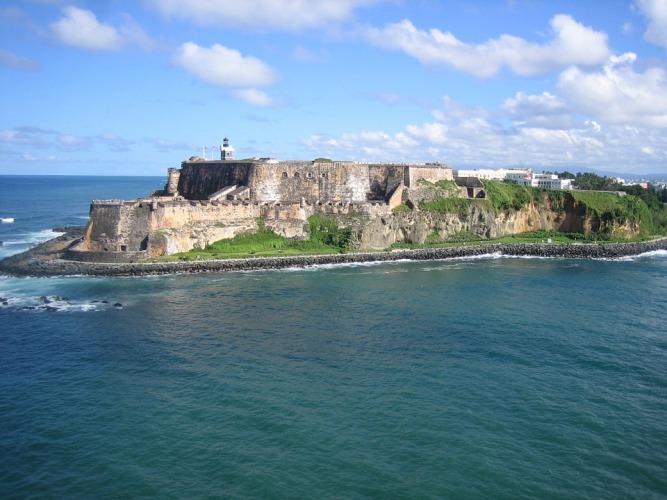
10 Shark Species in Puerto Rico
Reef
Aside from the Caribbean, the Reef Shark also resides in South American coral reefs.
They typically enjoy bony fish, including cowfish, sturgeon, and butterfish.
However, they will also feast on squid and octopus, shrimp and lobster, or other cephalopods and crustaceans.
They usually swim near the surface no more than 100-378 feet underwater.
However, they do sometimes dive to at least 1,000 feet deep.
Nurse
They usually grow to a maximum of 10-15 feet and can live 25-30 years.
This shark also eats a variety of sea creatures including stingrays, squid, lobsters or sea urchins, and fish.
The Nurse Shark prefers to stay near the surface at less than 40 feet but is still a bottom feeder.
Tiger
It sometimes extends to at least 16 feet and does not seem to have a picky diet.
Favorite foods include crabs, lobsters, seals, birds, prawns, dolphins, sea snakes, fish, and more.
In addition, it sometimes eats other sharks.
Tiger Sharks typically inhabit shallow waters near the coast but do sometimes submerge themselves to about 1,500-3,000 feet.
Sixgill
This shark, which can grow up to 20 feet, typically eats cod, flounder, dolphins, stingrays, corals, and conches.
It also dines on crabs, shrimp, lobsters, and other crustaceans.
This type usually likes to hang out about 4,500-6,000 feet underwater.
Great Hammerhead
The approximate length measures 15-20 feet.
Although potentially dangerous, this shark prefers ocean creatures like shellfish, octopus, stingrays, or squid.
It never has shown much interest in trying to eat humans but has become a suspect in rare shark attacks.
Great Hammerheads prefer to live in coral reefs and stay close to the water surface only about 260 feet underwater.
They also inhabit island terraces, lagoons, and continental shelves.
White Tip
The White Tip Shark loves the warm and tropical waters.
It also eats seabirds, other sharks, rays, tuna, and squid.
Unfortunately, this sea creature sometimes becomes curious about litter.
They prefer to remain in shallow waters of only about 131 feet deep or less and only grow to 5-6 feet long.
The maximum recorded length was measured at only 7 feet.
Bull
This type does sometimes attack humans either accidentally or out of curiosity but not necessarily for food.
It is reportedly one of the most dangerous sharks in the world and has had at least 22 fatal global attacks on record since the late 1700s.
They can survive in both freshwater and saltwater and usually do not swim that deep under the surface – only to about 100 feet below it.
This shark does not seem to have many food dislikes, and on rare occasions, it may have eaten other bull sharks.
Aside from ocean animals, it also eats turtles and birds.
Antilles Catsharks
It has no record of unprovoked attacks against humans.
It also defines what you probably think of when hearing about this kind of sea animal.
It is not humongous like other sharks.
In fact, it only measures less than 2 feet long and usually weighs only about 3 pounds.
Despite its miniature size, the Antilles Catshark will still ingest squid and octopuses.
Silky
It lives up to its reputation with the smooth, soft skin for which it acquired its name.
This sea animal poses no threat to humans and does not swim near the shore.
The Silky Shark prefers tuna to all other fish and explores at depths between 660-1600 feet.
They grow to about 12 feet long.
Scalloped Hammerheads
This shark has a unique way of hammering stingrays to the ocean floor.
They also use their built-in sensory receptors to spot prey covered by sand.
It typically swims close to the surface but at least 80 feet underwater and descends to around 1,660 feet deep.
Other seafood they eat include mackerel, herring or octopuses, and squid.
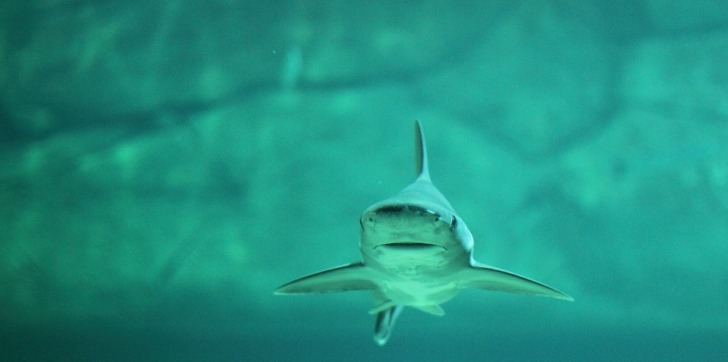
Is it Safe to Swim in Puerto Rico?
Most sharks swimming around Puerto Rico will not hurt humans, but you better watch out for alerts concerning the Bull Sharks.
Beware also that five fatal attacks occurred in Puerto Rico since 1822 and the species that caused these deaths remains unconfirmed.
Always pay attention to swimming and shark advisories before you try to enter the water for any reason.
Most of the time, on the other hand, you do not have to worry.
It is rarer than you think that a shark would bite or kill a person despite what you see in the news.
Interesting Shark Facts in Puerto Rico
Again, it is rare that a shark will attack a person, let alone kill one.
In fact, it is typically the other way around.
Millions of sharks die by human hands, but it is mostly for commercial fishing that in some locations is legal for sustenance purposes.
Still, stories of attacks have people worried, and it is wise to listen to them and prepare.
However, not all interesting shark facts pertain to how “bad” sharks supposedly are, which you will find out soon enough.
One of the most triumphant shark attacks is the “close call” that happened in 2021.
Surfer Rolanda Montes frantically swam back to shore as fast as he could after he saw a shark behind him.
Jorge Benitez watched while filming the entire incident.
Benitez said the animal behind him looked like a stingray.
Reports stated that the offending shark may be a Hammerhead about 2.5-3 meters long (approximately 8.2-9.8 feet).
Most shark attacks are non-fatal, but this would be one of the closest to a fatality whilst the person did survive.
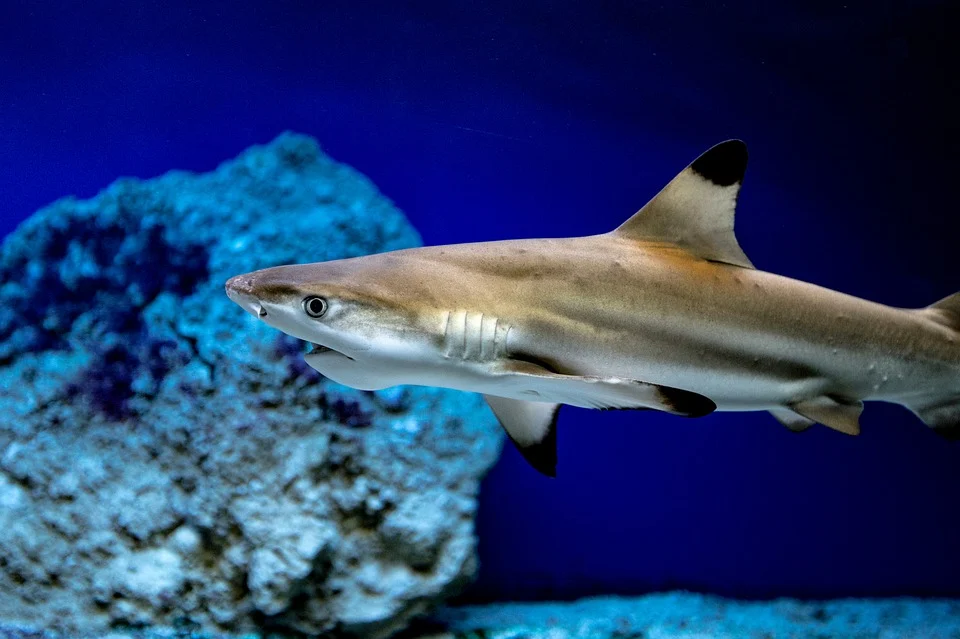
Puerto Rico does have sharks that survive in both freshwater and saltwater.
However, most of them do prefer saltwater.
You can consult a salinity map to learn more about what to expect when arriving in Puerto Rico and risk encountering sharks when swimming, snorkeling, or surfing.
The Caribbean salinity concentration measures at about 3.6 percent, and the Atlantic Ocean is about 3.5 percent salt.
Warning and Safety Tips for Swimming in Shark-infested Waters
WARNING: If the sign says do not swim, then do not go into the water.
You also should not try surfing or tubing in shark-infested waters either.
People often do not listen to this important cautionary concern, and it has resulted in 791 shark attacks around the world from 2010-2019.
Most of these were non-fatal, but that is what happens when people ignore swimming precautions.
Listen to all warnings and review all safety tips before you swim in Puerto Rico.
Priority Safety Tips for Swimmers and Surfers
You can read here for more information on how to stay safe on Puerto Rico beaches and in the water.
These precautionary steps should remain a priority:
- Do not ever swim alone. Bring as many people with you as possible. Ideally, it is good to have at least two others with you, so one can call for help. The other person can stay with an injured person until medics arrive.
- Do not wander too far from shore. If you venture deep into the water, it could make returning to shore challenging if you do experience a shark attack. For boaters, adhere to all safety protocols and take classes if you have not yet.
- Tell people where you are going. They can look out for you from the beach and call for assistance when you need it.
- Avoid swimming at night. This particularly applies when alone. However, it is tough for anyone to notice you are in the water after dark, especially if the area does not have any lights.
- Do not go in sewage water. Sharks might pick up the scent of discarded debris, so stay away from treatment plant waters or factory dumping stations.
- Do not enter the water when bleeding. Sharks may not necessarily prefer your smell, but they do know the scent of blood. You do not want to take any chances of a bite.
- Watch out for strong currents. This could indicate the presence of a tide, which could pull you into deep waters where sharks might swim.
- Heed lifeguard safety flags. This will alert you of any danger and of its level. Green means you can safely swim in the water, and yellow means “be careful.” Do not enter the water if a lifeguard waves a red flag.
- Do not wear shiny jewelry. It can startle a shark, and they could attack if scared. In fact, do not wear any jewelry in the water to avoid all shark-related swimming accidents.
Summary
Puerto Rico shark attacks remain relatively low, but you still need to stay cautious.
Taking steps to protect yourself can make you feel less apprehensive about swimming in the Caribbean or the Pacific Ocean.
Always have a plan and know as much as possible about the areas where you swim and surf.
Sources
- https://www.sharksider.com/caribbean-reef-shark/
- https://oceana.org/marine-life/whitetip-reef-shark/
- https://a-z-animals.com/blog/the-7-most-aggressive-sharks-in-the-world/
- https://www.nwf.org/Educational-Resources/Wildlife-Guide/Fish/Bull-Shark
- https://en.wikipedia.org/wiki/List_of_fatal_shark_attacks_in_the_United_States
- https://au.news.yahoo.com/surfers-terrifying-close-encounter-with-large-shark-030720956.html
- https://www2.usgs.gov/water/southatlantic/projects/coastalsalinity/index.html
- https://nypost.com/2021/12/01/heart-stopping-moment-massive-shark-chases-surfers-in-puerto-rico/
- https://www.fisheries.noaa.gov/southeast/consultations/puerto-rico
Traveling to Puerto Rico?
Stay safe and learn about current safety issues in our report:
Puerto Rico Safety Overview
READ THE FULL REPORT: Puerto Rico Safety Review
Safety Index:
- OVERALL RISK: MEDIUM
- TRANSPORT & TAXIS RISK: MEDIUM
- PICKPOCKETS RISK: MEDIUM
- NATURAL DISASTERS RISK: MEDIUM
- MUGGING RISK: MEDIUM
- TERRORISM RISK: LOW
- SCAMS RISK: MEDIUM
- WOMEN TRAVELERS RISK: LOW
Frequently Asked Questions
How many Puerto Rico shark attacks occur each year?
Shark attacks in Puerto Rico hardly ever happen.
However, just a few deaths in a hundred years tell you of the possibility.
Still, try not to worry.
As long as you follow proper safety procedures, you should not need to worry much.
Does Puerto Rico have the largest sharks in the world?
It does not necessarily have the largest sharks in the world, but some do grow to 20 feet or more.
You might also spot some that reach more than 40 feet in length.
However, those sharks do not come around that often or perhaps are now classified as endangered.
Are the Puerto Rico sharks becoming extinct?
According to the IUCN, about 63 percent of the shark species currently alive are near threatened.
They have not become endangered yet, but they could be unless preservation action takes place.
Among the most common species, the Scalloped Hammerhead, White Tip, and Sixgill account for some of the most threatened sharks in Puerto Rico.
Are most Puerto Rico sharks dangerous?
Most Puerto Rico Sharks will NOT hurt or attack humans.
As long as you do not ignore “no swimming” signs and pay attention to the safety tips lifeguards give you, you do not need to worry.
Always listen and prepare yourself for the worst but enjoy your time in Puerto Rico knowing that sharks rarely attack here.
